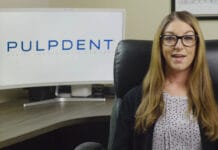Once upon a dental chair, a magical hygienist once turned every quick “no” on fluoride into a golden and exuberant “YES!” At least in fairy tales… In reality, patients don’t always say “yes,” and hygienists are often faced with some who are emphatic in their “no” response. So, what magic exists to break through the spell of such a declarative declination, and how can it be put into daily practice? A rather powerful potion is understanding the ethical principles of patient education and informed consent and using them to begin a conversation where it would seem easiest to allow one to end.
When discussing fluoride, or any type of treatment, it is important to consider patient autonomy. This means understanding that the patient has a right to decline any treatment presented to them. It is easy to become frustrated by patients wanting to act against the medical advice given to them by a licensed health care provider. However, allowing the patient to make their own health care decisions is at the core of the ethical guidelines on which our dental profession was built.
The American Dental Association (ADA) defines patient autonomy as, “The concept that professionals have a duty to treat the patient according to the patient’s desires, within the bounds of accepted treatment…” The ADA continues to specify that the dentist’s “primary obligation include[s] involving patients in treatment decisions in a meaningful way, with due consideration being given to the patient’s needs, desires and abilities…”1 Further reading into the ADA Code of Professional Conduct details that the patient should be informed of “the proposed treatment, and any reasonable alternatives, in a manner that allows the patient to become involved in treatment decisions.”1
The American Dental Hygienists Association (ADHA) also cites “Individual autonomy and respect for human beings”2 as one of the Core Values within their own ethical guidelines. This item states that “people have the right to be treated with respect. They have the right to informed consent prior to treatment, and they have the right to full disclosure of all relevant information so that they can make informed choices about their care.”2 So, simply asking if a patient would like a fluoride treatment and accepting a “no” answer without further conversation fails to meet these standards. Where is the magic in a leaving a closed-door closed? No spell was ever lifted that way!
Of course, guidelines are just that. They are not rules that must be followed but serve as a roadmap to the best practices of patient care. They act as lights to point the way through the murkier areas of patient treatment and interaction. Advocating for our patients’ health is equally as important as advocating for their dental education. By not pursuing a patient’s reasons for declining fluoride, nor offering information about its benefits, a hygienist cannot be sure they are obtaining truly informed consent (or declination as the case may be).
Oftentimes, hygienists are hesitant to pursue a conversation about fluoride due to a lack of factual knowledge about fluoride itself, or the specifics of the fluoride product currently being offered in their practice. Taking the time to familiarize oneself with the particulars of a fluoride product and taking continuing education courses to refresh general knowledge of fluoride uses can provide a strong foundation for informing and educating a wary patient. Additionally, staying current on fluoride alternatives is a useful discussion tool that upholds the ADA standards of providing for “reasonable alternatives” to any proposed treatment.1
The ADA has published clinical recommendations for non-fluoride caries prevention products on their website.3 The current report was originated in 2011 but is due to be updated again sometime this year. While nothing in that report shows as strong an ability to prevent caries as fluoride, being able to have a knowledgeable conversation about alternatives can build trust between a patient and a hygienist.
The final ethical consideration when discussing any treatment with a patient is beneficence. It is a term that literally means “do good.”1 Picture, if you will, a dental hygienist in shining armor. Conceptually, it means that a healthcare provider should act in the best interests of their patients. According to the ADA, “the most important aspect of this obligation is …[the] delivery of dental care within the bounds of clinical circumstances presented by the patient, with due consideration being given to the needs, desires, and values of the patient.”1 Making an effort to sincerely understand the patient’s views on potential treatments is paramount to the ethical practice of dental hygiene. A knightly hygienist must be considerate of those he/she serves.
Turning that initial “no” into a “yes” is not really magic. It can happen with careful discussion and mindfulness towards patient autonomy. More often than not, the conversation will simply plant a seed for open dialogue, so that even if the patient declines today, they may be more open to it the next time around. Working with the ethical guidelines provided by the ADA and the ADHA provides a foundation for opening as many doors as possible for building a trusting relationship between the patient and the provider. Where one conversation ends, another story can then begin.
SEE ALSO: The Great Fluoride Debate: Patients who Refuse Fluoride
Now Check Out the Self-Study, Peer-Reviewed CE Courses from Today’s RDH!
Listen to the Today’s RDH Dental Hygiene Podcast Below:
References
- American Dental Association Principles of Ethics and Code of Professional Conduct (2019). Retrieved from https://www.ada.org/en/about-the-ada/principles-of-ethics-code-of-professional-conduct/
- American Dental Hygienists’ Association Bylaws and Code of Ethics. (June 2018). Retrieved from https://www.adha.org/resources-docs/7611_Bylaws_and_Code_of_Ethics.pdf
- Non-fluoride Agents for Caries Prevention (2011). Retrieved from https://ebd.ada.org/en/evidence/guidelines/non-fluoride-caries-preventive-agents












